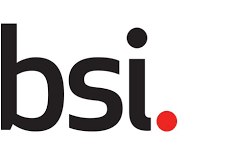Any comments received will be submitted to the national committee “AMT/4 – Industrial data and manufacturing interfaces” for consideration when deciding the UK response to the associated Standards Development Organisation.
- Proposal: ISO/NP 23198, Enterprise modelling and architecture — Constructs for Service Modelling.
Please visit https://standardsdevelopment.bsigroup.com/projects/9023-08841#/section
Comment period end date: 27/08/2023
Scope
This document specifies constructs for modelling product-related service systems in business terms, recognising the service environment and the product lifecycle. The constructs and their meta-model are consistent with a model-driven service engineering architecture. This document is intended for use by business users to address their business concerns and decision-making, and by systems engineers and information technology researchers using a model-driven engineering approach in the design, development and deployment of service systems in virtual manufacturing enterprises, business ecosystems and other application areas.
Purpose
This standard specifies constructs for modelling and specifying product-related service systems in general business terms. It is generally considered that many Manufacturing Enterprises will progressively migrate from traditional product-centric business to product-based, service-oriented virtual enterprises and ecosystems. This standard focuses on modelling of manufacturing services that a company can develop to support its products.
A standardized set of constructs for service modelling will foster the development of more compatible products in enterprise service modelling and hence reduce problems in the interoperation of such ICT products. The constructs with their associated meta-model will reduce costly and fragmented development in this domain. The standard will facilitate not only the modelling of services and service systems but will also support the development of interoperable software solutions among co-operating organizations.
In addition, the standard will have a positive impact on improving interoperability of model based, service-oriented products, enabling virtual factories and enterprises to adapt to the future internet infrastructure.
Benefits for the end-user result from a co-ordinated use of a common modelling language in the design and operation of service system. This leads to considerable quality improvement in the design process and cost reduction in the system operation.
The standard uses the same format and methodology as that used for ISO 19440:2020, Constructs for Enterprise Modelling, but employs fewer constructs and has a simpler structure. The service constructs can be considered as a derivation of the more general modelling language in ISO 19440:2020 and are complementary to those constructs.)
2) Proposal: ISO/PWI TS 230-13, Test code for machine tools — Part 13: Guidelines on acceptance tests for machine tools used as coordinate measuring machines.
Please visit ISO/IEC NP TS 5689 Title missing
Comment period end date: 09/09/2023
Scope
This document provides the followings:
CPS conceptual model and its specific characteristics
– a conceptual model of cyber-physical systems (CPS) and its general features;
– specific characteristics of CPS compared to other related concepts; Concerns and security frameworks
– security concerns as the basis for the discussion of security risks and security controls for the CPS based on the conceptual model;
– several security frameworks to address those security concerns;
Practical use cases for CPS
– use cases based on the respective security frameworks for CPS;
– provision of visibility of use cases into the specific use of the security frameworks, etc.
This document does not provide specific security controls needed in cyber-physical systems.
This document applies to all sectors where CPS are or will be present, which encapsulate a diverse set of sectors ranging from industrial (e.g., manufacturing) to public (e.g., smart cities).CPS stakeholders such as users, developers, and operators can have a common understanding of CPS (e.g., concepts, risks, security framework) through this document.
Purpose
While cyberspace and physical space are highly integrated into “smart cities” or “smart supply chain” with the development of IoT, inter-organizational data exchange platforms (e.g., data space) and sophisticated data-driven applications, it is concerned that impacts caused by security incidents will increasingly grow in scale.
To address increasingly sophisticated cyber threats, there is a particular need to importantly recognize the concept and specific use cases of “cyber physical systems (CPS)” and identify security and related risks under CPS. This work would integrate the findings of the various documents developed for such objectives (e.g., NIST, METI) and provide common suggestions.
Based on the above understanding, this project would provide (1) CPS conceptual model, (2) Concerns and security frameworks (3) Use cases.
The clear definition, the conceptual model and practical use cases of CPS will be useful for the purpose of improving the efficiency of all social systems, creating new industries, and improving intellectual productivity through developing and operating CPS.
Identification of security and related concerns and mitigations with security frameworks promotes better security management as a part of efforts to ensure trustworthiness in complex environments such as CPS, where multiple IoT systems work together to provide sophisticated functions. If you have any comment or need more information, please contact Sami Ortiz at [email protected]

